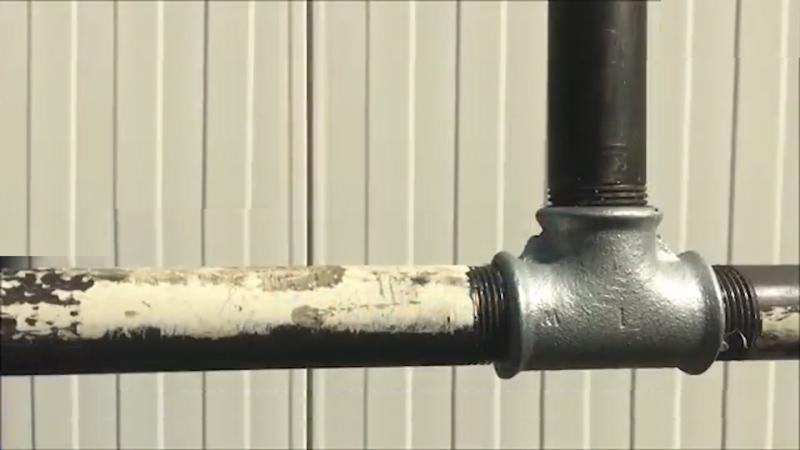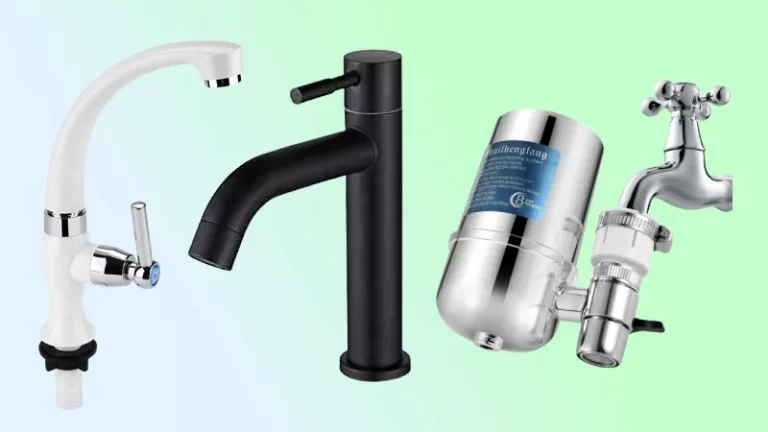How to Fix Leaking Threaded Joint Without Disassembly?

Thread sealants are materials used to fill gaps in threaded pipe joints or connections to prevent fluids from leaking. They are available in two varieties: paste and tape.
Paste sealants require the use of a finger or brush to apply the sealant to the leaking area, and come in different ingredients such as PTFE or a combination of rosin, alcohol, and minerals. Tape sealants are a better alternative to paste sealants, and are sold in rolls with varying thickness, density, and width.
To use a tape sealant, simply wrap and press the tape around the leaking area. To apply a thread sealant properly, it is important to avoid getting the sealant in the pipe and to fill the threads completely. Other methods of fixing leaking threaded joints include using epoxy putty or pipelining.
You'll Learn About
Reasons for Leaking Threaded Joint
There are several reasons why threaded joints may leak, including:
Improper installation
If the threads are not aligned properly or are not tightened sufficiently, there may be gaps or voids in the joint that allow fluids to leak. This can be caused by poor installation techniques, damaged or worn threads, or incorrect sizing of the fittings.
Degradation of materials
Over time, the materials used in threaded joints can degrade due to exposure to heat, pressure, chemicals, or other factors. This can lead to the formation of cracks or weaknesses in the joint, allowing fluids to leak through.
Corrosion
Threaded joints are vulnerable to corrosion, which can weaken the materials and create holes or gaps in the joint. This is particularly common in older or poorly maintained pipes, or in areas with high levels of moisture or humidity.
Loosening of threads
Threaded joints can loosen over time due to vibration, pressure fluctuations, or other factors. This can create gaps or voids in the joint, allowing fluids to leak through.
Damage to threads
Threaded joints can be damaged by impacts, cutting tools, or other external forces, which can create gaps or voids in the joint. This can be particularly common in areas where pipes are installed near heavy machinery or equipment.
Expansion and contraction
Threaded joints are subjected to thermal expansion and contraction as the temperature changes, which can cause the threads to loosen or bind. This can lead to gaps or voids in the joint, allowing fluids to leak through.
Methods of Fix Leaking Threaded Joint Without Disassembly
There are several methods that can be used to fix a leaking threaded joint, including:
Applying PTFE tape
This involves cleaning the male and female threads of any oil or dirt, pressing a bit of tape on the last thread, wrapping the tape around the leaking threads in a clockwise direction, and pressing it into the leaking thread joint.
Applying pipe dope (paste)
This involves cleaning the male and female threads of any oil or dirt, mixing the pipe dope thoroughly to combine the solvent and paste, using a finger or brush to coat the leaking thread joint, and screwing the male threads into the pipe fitting.
Using repair epoxy
This involves turning off the water valve connecting to the leaking threaded joint, locating the leaking pipe section, wiping away any water buildup or drip, smoothing out rust or damage on the pipe with sandpaper, mixing the two parts of the epoxy putty together, applying the putty to the leaking area, and allowing it to cure according to the manufacturer’s instructions.
Using pipelining
This involves turning off the water valve connecting to the leaking threaded joint, locating the leaking pipe section, cleaning the pipe and surrounding area, mixing the pipe lining material according to the manufacturer’s instructions, applying the pipe lining to the leaking area, and allowing it to cure according to the manufacturer’s instructions.
How to Fix Leaking Threaded Joint Without Disassembly?
Method 1: Applying PTFE tape
Tools required
- PTFE tape
- clean cloth or rag
- screwdriver (if necessary)
Steps
- Turn off the water supply to the leaking threaded joint.
- Use a clean cloth or rag to remove any oil or dirt from the male and female threads.
- Press a bit of PTFE tape onto the last thread of the male fitting.
- Wrap the PTFE tape around the leaking threads in a clockwise direction, keeping it tight as you go.
- Apply 3-5 wraps of PTFE tape, or more if desired.
- Tear the tape and press it into the leaking thread joint.
- Screw the threads into the joint, tightening them according to the manufacturer’s instructions.
Method 2: Applying pipe dope (paste)
Tools required
- Pipe dope
- brush or finger
- clean cloth or rag
- screwdriver (if necessary)
Steps
- Turn off the water supply to the leaking threaded joint.
- Use a clean cloth or rag to remove any oil or dirt from the male and female threads.
- Thoroughly mix the pipe dope to ensure that the solvent and paste are well combined.
- Use a brush or finger to coat the leaking thread joint with the pipe dope, making sure not to get it inside the pipe.
- Screw the male threads into the pipe fitting, and tighten them according to the manufacturer’s instructions. Some paste may ooze out during this process.
Method 3: Using repair epoxy
Tools required
- Repair Epoxy
- clean cloth or rag
- sandpaper (if necessary)
- screwdriver (if necessary)
Steps
- Turn off the water supply to the leaking threaded joint.
- Use a clean cloth or rag to remove any water buildup or drip around the leaking area.
- If there is rust or damage on the pipe, smooth it out with sandpaper.
- Mix the two parts of the repair epoxy putty together, following the manufacturer’s instructions.
- Apply the putty to the leaking area, using your finger or a tool to shape it as desired.
- Allow the putty to cure according to the manufacturer’s instructions.
Method 4: Using pipelining
Tools required
- Pipelining material
- clean cloth or rag
- mixing container and stirring tool
- brush or roller
- screwdriver (if necessary)
Steps
- Turn off the water supply to the leaking threaded joint.
- Use a clean cloth or rag to remove any water buildup or drip around the leaking area.
- Clean the pipe and surrounding area to remove any debris or contaminants.
- Mix the pipe lining material according to the manufacturer’s instructions, using a mixing container and stirring tool.
- Apply the pipe lining to the leaking area using a brush or roller.
- Allow the pipe lining to cure according to the manufacturer’s instructions.
Pros and Cons of Each Method (Which one is the Best?)
Applying PTFE tape
Pros:
- PTFE tape is relatively inexpensive and easy to find at most hardware stores.
- It is easy to apply, requiring only a few wraps around the leaking threads.
- It creates a strong and durable seal that can withstand high temperatures and pressure.
Cons:
- PTFE tape can unravel if not applied properly, reducing its effectiveness.
- It may not be suitable for use with certain types of pipe or fittings.
- It is not recommended for use with plastic pipes, as it can cause them to crack when tightened.
Applying pipe dope (paste)
Pros:
- Pipe dope is thicker and more adhesive than PTFE tape, making it more effective at sealing leaking threads.
- It is compatible with a wider range of pipe materials and fittings.
- It is easy to apply, requiring only a brush or finger to coat the leaking threads.
Cons:
- Pipe dope is more expensive and harder to find than PTFE tape.
- It can be messy to work with, as it may ooze out of the threads during installation.
- Some types of pipe dope must be allowed to dry before they can create a seal, which may not be suitable for emergency repairs.
Using repair epoxy
Pros:
- Repair Epoxy is a quick and easy solution for minor leaks, as it can be applied and cured within a few hours.
- It is strong and durable and can be shaped to fit a variety of leaks.
- It is compatible with a wide range of pipe materials and fittings.
Cons:
- Repairing epoxy is more expensive than PTFE tape or pipe dope.
- It may not be suitable for large or severe leaks, as it may not be able to withstand high pressures or temperatures.
- It is not recommended for use with plastic pipes, as it can cause them to crack when tightened.
Using pipelining
Pros:
- Pipelining is a more permanent solution for leaking threaded joints, as it creates a new, seamless inner lining for the pipe.
- It is compatible with a wide range of pipe materials and fittings.
- It can be used to repair leaks of various sizes and severity.
Cons:
- Pipelining is the most expensive and time-consuming option for fixing leaking threaded joints.
- It requires special tools and equipment to apply, which may not be readily available to most homeowners.
- It may not be suitable for use in emergency situations, as it requires time to cure before it is fully effective.
The Best one To Use
Overall, the best method for fixing a leaking threaded joint will depend on the specific circumstances of the leak and the materials and tools available. In most cases, PTFE tape is a good first choice due to its low cost and ease of use, but it may not be suitable for all types of pipes or leaks.
Pipe dope and repair epoxy can be effective alternatives in certain situations, but they may be more expensive and harder to apply. Pipelining is the most permanent and effective solution, but it may not be practical for all leaks or budgets.
If you’re dealing with plumbing issues, it’s worth exploring whether your shower and toilet can share a vent to simplify your system. Additionally, understanding if a toilet and sink can share the same drain can help you optimize your plumbing layout. For more tips, check out the difference between a vent stack and a stack vent.
Final Words
Leaking threaded joints can be a frustrating and potentially damaging issue in plumbing systems. Fortunately, there are several methods for fixing leaking threads without disassembling the entire pipe or fitting. In this article, we have discussed four different methods for fixing leaking threaded joints, including using PTFE tape, pipe dope, repair epoxy, and pipelining.
These methods can help to quickly and effectively seal the leaking threads, preventing further damage and saving time and money.

